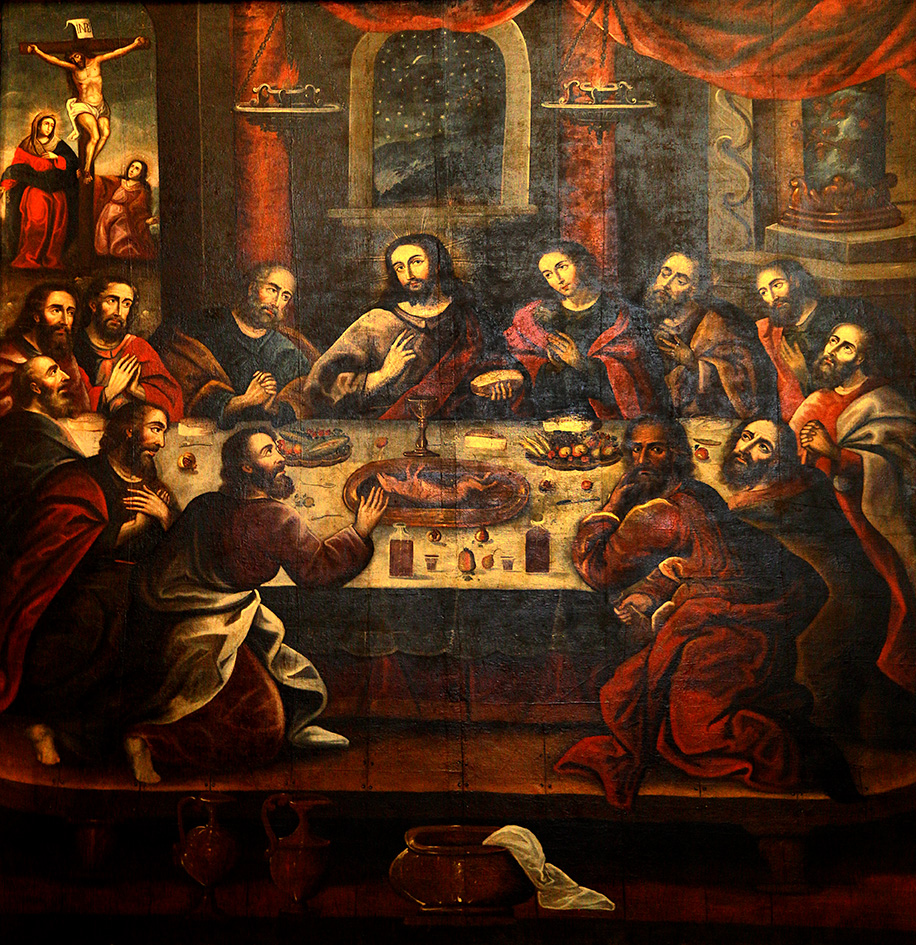In the heart of Cusco Cathedral hangs an oil painting by Marcos Zapata (also known as Marcos Sapaca Inca) depicting the Last Supper. The table is laid with a sumptuous banquet, consisting of corn or chicha beer, potatoes, peppers and a freshly roasted guinea pig. Zapata’s Andean Last Supper registers the exchange of cultures, foods and animals in the New World and highlights one of its most ubiquitous components: the guinea pig, or cuy. A common dish in the Andes, as well as a frequent sacrificial animal, the guinea pig was one of just three domesticated mammals in pre-Hispanic South America (along with the llama and the alpaca). Today the cuy is widely consumed in Africa and Asia as well. Eaten, sacrificed, fashioned from clay, represented in art and adopted as a pet, the tiny cuy or guinea pig has developed an impressive global career.
GUINEA PIG LAST SUPPER
Helen Cowie
Further reading
- Acosta, J. (2002) Natural and Moral History of the Indies [1589], edited by J. Mangan, translated by F. López-Morillas (Durham, NC: Duke University Press).
- Asúa, M., and R. French (2005) A New World of Animals: Early Modern Europeans on the Creatures of Iberian America (Aldershot, Hampshire: Ashgate Publishing).
- Crosby, A. (1972) The Columbian Exchange: Biological and Cultural Consequences of 1492 (Westport, CT: Greenwood Press).
- Cumberland, C. (1886) The Guinea Pig, or Domestic Cavy, for Food, Fur and Fancy (London: L. Upcott Gill).
- Defrance, S. (2006) ‘The sixth toe: the modern culinary role of the guinea pig in southern Peru’, Food and Foodways, 14 (1): 3–34.
- Few, M., and Z. Tortorici (eds.) (2014) Centering Animals in Latin American History (Durham, NC: Duke University Press).
- Gade, D. (1967) ‘The guinea pig in Andean folk culture’, Geographical Review, 57 (2): 213–24.
- Maas, B. (2019) ‘Why more people in Africa should farm guinea pigs for food’, The Conversation, https://theconversation.com/why-more-people-in-africa-should-farm-guinea-pigs-for- food-108477.
- Morales, E. (1994) ‘The guinea pig in the Andean economy: from household animal to market commodity’, Latin American Research Review, 29 (3), 129–42.
- Parker Brienen, R. (2006) Visions of Savage Paradise: Albert Eckhout, Court Painter in Colonial Dutch Brazil (Amsterdam: Amsterdam University Press).
- Sandweiss, D., and E. Wing (1997) ‘Ritual rodents: the guinea pigs of Chincha, Peru’, Journal of Field Archaeology, 24 (1): 47–58.
- Yamamoto, D. (2015) Guinea Pig (London: Reaktion Books).





